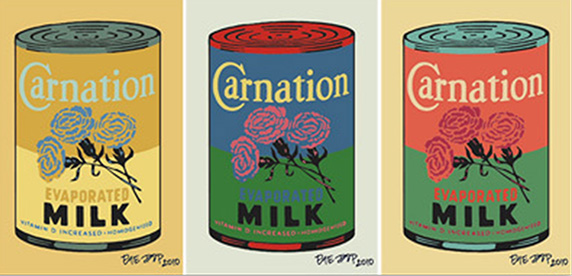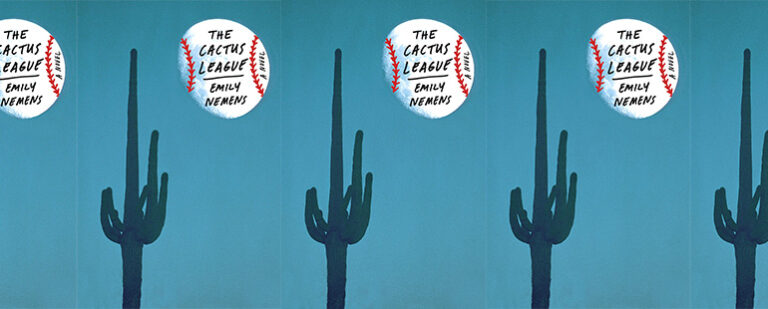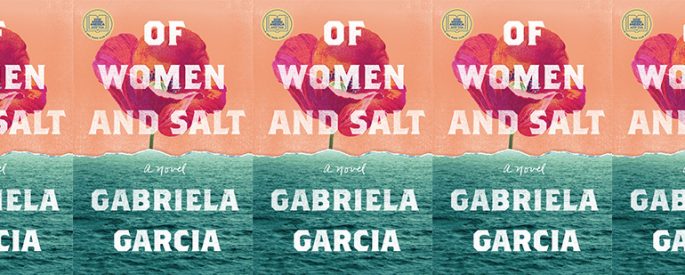Dybek, Shalamov, and Condensed Milk

In 1956, Varlam Shalamov wrote “Condensed Milk,” which is included in his collection Kolyma Stories, translated by Donald Rayfield. Shalamov spent fifteen years in the Gulag, and his stories reflect his time there. “Condensed Milk” is the story of a possible escape from a forced-labor camp. Almost thirty years later, in 1984, Stuart Dybek published “Pet Milk” in The New Yorker. Dybek’s story is one of reflection and remembrance, a love story of the past.
The stories are both extremely short, have first-person man narrators, and take place in the mid-twentieth century. They each prominently feature canned milk in their titles and narratives, a milk that has 60% of the water removed from it. Condensed milk usually has sugar added; “PET Milk” is the brand name for an American evaporated milk that is naturally sweetened. Either way, it is thick and sweet and rich, most often used today as an ingredient in recipes. But its staying power is what’s important here—once canned, the milk has a shelf life of up to a year. Both stories focus on the milk’s ability to last, its ability to preserve.
“Condensed Milk” begins as follows:
Hunger made our envy as dull and feeble as all our other feelings. We had no strength left for feelings, to search for easier work, to walk, to ask, to beg. We envied only those we knew, with whom we had come into this world, if they had managed to get work in the office, the hospital, or the stables, where there were no long hours of heavy physical work, which was glorified on the arches over all the gates as a matter for valor and heroism. In a word, we envied only Shestakov.
Hunger begins this story and is threaded throughout; it is at the core of everything the narrator does. The narrator, a prisoner in a forced-labor camp in Siberia, speaks initially using the first-person plural, which allows him to set up a contrast between most of the prisoners and one of the elite prisoners, a man named Shestakov, whom the narrator had known Shestakov prior to their arrival at the forced-labor camp, when they were cellmates in a prison in Moscow.
One day, Shestakov approaches the narrator and asks to speak to him. He has a plan to escape, he says, because he cannot simply sit around and wait for death to arrive. “I have a map,” he says repeatedly. The plan is to go to the sea, but when the narrator asks what will happen then, Shestakov says that that doesn’t matter. The narrator then understands that this is some sort of trap, but he doesn’t let on that he knows. Instead, he says that he’s willing to go, but first he needs food. Shestakov agrees and offers up tinned food. The narrator thinks:
There are lots of different tinned foods—meat, fish, fruit, vegetables—but the best of all is milk, condensed milk. Condensed milk doesn’t have to be mixed with boiling water. You eat it with a spoon, or spread it on bread, or swallow it drop by drop from the tin, eating it slowly, watching the bright liquid mass turn yellow with starry little drops of sugar forming on the can. . . .
‘Tomorrow,’ I said, gasping with joy, ‘tinned milk.’
The description of the milk is sensual, Shalamov slowing down his prose to let the reader understand the narrator’s joy in this moment. It is hard not to gasp along with him. The surprising use of the second person here also works to bring the reader into this moment, to help them share it with the narrator.
When the narrator goes to sleep that night, knowing that the following day will bring him the milk, he dreams of it:
I fell asleep and in my spasmodic hungry sleep I dreamed of Shestakov’s can of condensed milk: a monstrous tin can with a sky-blue label. Enormous, blue as the night sky, the can had thousands of holes in it and milk was oozing out and flowing in a broad stream like the Milky Way. And I had no trouble reaching up to the sky to eat the thick, sweet, starry milk.
The prisoner’s hunger and deprivation are contrasted with the vividness of the dream, the “starry little drops” from the initial description of the milk now transformed into a nightscape with the milk pouring down from an enormous tin can in the sky. We feel, in this dream, the never-ending desire to eat.
The following day, Shestakov brings two cans of milk. With other prisoners standing around watching, the narrator proceeds to open the cans with the corner of an ax: “A thick white stream flowed onto the lid and onto my hand.” He understands that the other prisoners will watch, not in the hope that he will share, but because “it was impossible not to look at food disappearing into someone else’s mouth.” Regardless, he proceeds to eat: “I made myself as comfortable as I could and consumed the milk without bread, just washing it down occasionally with cold water.” The reader is standing, in effect, with the other prisoners, also transfixed watching the narrator consume the milk.
And then, he says, “I’ve changed my mind. You can leave without me.”
The narrator has obtained the milk through a ruse. He knows the trip is a scam and that he will certainly die if he tries to escape. He will also probably die staying at the camp. The most important thing is to find sustenance, and he manages to do just that, not by eating meat or vegetables, but in a spectacular way: by eating a sweet, rich, dessert-like confection. For him, the present and preserving himself for yet another day is all that matters.
The trip goes off as planned, without the narrator, and men are killed, just as the narrator anticipates. Shestakov, of course, is not punished. Later, the two men meet up at another labor camp—so we learn that the narrator continues living—but when they are there, Shestakov doesn’t acknowledge the narrator. The narrator is disappointed by this and thinks, “Two tins of condensed milk was not really worth making a fuss about, after all.” But this is ironic, of course: for the narrator, they were a necessity. They provided a way for him to prolong his life.
“Pet Milk” doesn’t begin with hunger. Instead, it begins with coffee and a can of preserved milk:
Today I’ve been drinking instant coffee and Pet milk, and watching it snow. It’s not that I enjoy the taste especially, but I like the way Pet milk swirls in the coffee. Actually, my favorite thing about Pet milk is what the can opener does to the top of the can. The can is unmistakable—compact, seamless looking, its very shape suggesting that it could condense milk without any trouble. The can opener bites in neatly, and the thick liquid spills from the triangular gouge with a different look and viscosity than milk. Pet milk isn’t real milk. The color’s off, to start with. There’s almost something of the past about it, like old ivory. My grandmother always drank it in her coffee.
It is the look of the milk and the ways that the milk transports the narrator back in time that are important here. The swirling of the milk is connected to a swirl of memories, and after the opening the story never returns to the present moment. In fact, we never learn how much time has passed as the narrative continues. But how differently the can is opened here: while the prisoner used an ax, this narrator uses a can opener, a device designed precisely for this purpose. The story opens wide with the opening of the can. And while the prisoner consumes the milk straight out of the can, this narrator adds milk to coffee; he never drinks it alone. Both stories reflect on the way that the liquid oozes out of the can, but for Dybek’s narrator, the color of the milk reflects “something of the past,” and it serves as an entry point into his memories.
He remembers being with his grandmother, as she drank her coffee with “cream,” and he remembers looking out her window to see the sky swirling in much the same way as the milk. This memory, in turn, takes him to a more recent memory, when he was just out of college, drinking King Alphonses at a restaurant in Chicago with his girlfriend. A King Alphonse is made out of crème de cacao and heavy cream, the cream floating on top of the liqueur. It creates similar spirals, and the narrator would “stare into the liqueur glass, watching the patterns.” Again, we see the vast difference between these two worlds: the prisoner only sees the milk as a visual in his dreams. He would never look at the milk to see its patterns; it is there solely to be consumed.
Dybek’s story then moves to a specific day in the past: the narrator’s twenty-second birthday, when he and his girlfriend had dinner at the same restaurant they had visited earlier. The remainder of the story is focused on this evening; the swirls of the milk have been circling around this memory, taking both the narrator and the reader into the past, into the moment that is the crux of the story. In Shalamov’s story, this sense of time—a present that connects to the past and to the future—is not possible. Only the present moment exists.
Throughout Dybek’s story, though, the past, present, and future are constantly in conversation. There are many mentions of Europe, of the “old world,” but they almost immediately responded to with a reference to this memory of the narrator’s birthday, to the dreams of a young couple and their future. They have big plans—he wants to enter the Peace Corps and she wants to go to grad school in Europe—but these dreams will almost necessarily sever their connection: “Our plans for the future made us laugh and feel close, but those same plans somehow made anything more than temporary between us seem impossible.” It is a bittersweet memory, as we suspect that the girlfriend is no longer in his life.
At the restaurant, the couple orders champagne and oysters. We cannot help but contrast the conspicuous excess with the hunger in Shalamov’s story; the American optimism of the Camelot era is clearly positioned against the despair of the Russian prisoners. The swirling images continue: the narrator sees his girlfriend’s face reflected in the glass atop a painting of Prague hung on the restaurant’s walls: “But, this time, seeing her reflection hovering ghostlike upon an imaginary Prague was like seeing a future from which she had vanished.” Again, we see the connection between the past and the future.
The couple leaves the restaurant, too full for dinner, and sets off for the girlfriend’s apartment north of Chicago. On the train north, they find an empty conductor’s compartment and have sex inside as the train passes through Chicago on its way to the suburbs. It is then, in the final moments of the story, as the narrator is gazing out the window, that he catches sight of a sixteen-year-old boy on a platform, waiting for a train, who, in turn, catches sight of them and waves. The wave—another fluid motion—stays with the narrator: “It was as if I were standing on that platform, with my schoolbooks and a smoke, on one of those endlessly accumulated afternoons after school when I stood almost outside of time simply waiting for a train, and I thought how much I’d have loved seeing someone like us streaming by.” It is as though the narrator exists in multiple planes at once, the past, the present, and the future inextricably connected. He does, indeed, seem to exist “outside of time,” and once again, we think of the milk, as the train goes “streaming by.”
It is not clear whether Dybek wrote his story to be in conversation with Shalamov’s, but it is interesting that Shalamov died in 1982, just two years before Dybek published this story. For Dybek, the milk serves as a way into the narrator’s memories and as a way of connecting time. The patterns that he sees in the milk are echoed throughout the story, and tie together the beginning and the end, much as the past is connected with the present. The young man in Dybek’s story is preserving his past, holding his memories close. For the prisoner in Shalamov’s story, the milk represents the preservation of the self, the ability to live another day. The transformation of milk into preserved milk is a magic trick of sorts, a way to extend the life of a perishable product. Although in very different ways, “Condensed Milk” and “Pet Milk” are interested in considering man’s ability to do the same.
This piece was originally published on August 30, 2021.


